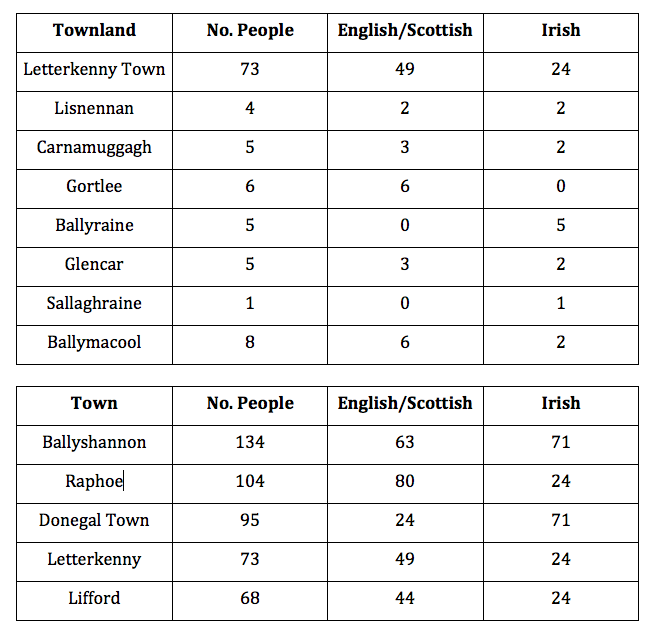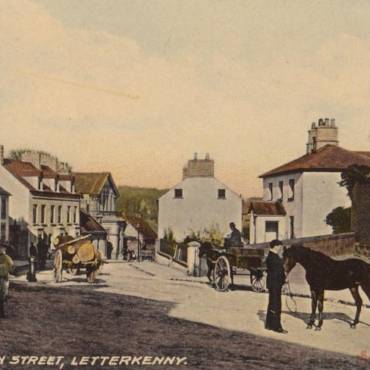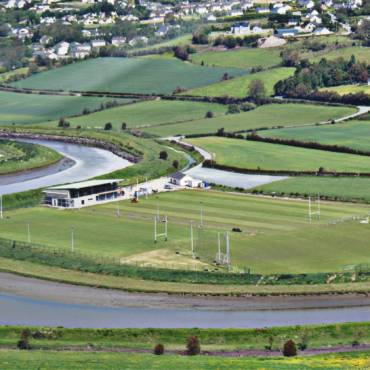1659 Census of Donegal
In 1659, a Census of Donegal took place and stated that the population of the town of Letterkenny was 73 people with 49 English/Scottish and 24 Irish residents. The principal landowners are given as Alexander Cunningham, James Cunningham, Alexander Ewing, Levinnis Sempill, Gilbert McIlwee, Peter Colhoune, William Jamisone, Walter Buchanan, Will Anderson and John Colhoune. The numbers of the neighbouring areas of Lisnennan, Carnamuggagh, Gortlee, Ballyraine, Glencar, Sallaghraine and Ballyraine are also given (see image).
For the barony of Kilmacrennan as a whole, there were 2,156 people in total recorded with 605 English/Scottish and 1,551 Irish, clearly showing the dominance of the Native Irish in this barony. The only barony in Donegal in which the planters outnumbered the Irish was the barony of Raphoe with 1,825 English/Scottish and 1,330 Irish. The total population of the county of Donegal was given as 12,001 with 3,412 English/Scottish and 8,589 Irish. The size of Letterkenny’s population at this time can be compared with other towns of Donegal (see image).
Although the population appears quite small, Letterkenny’s growth in just over 40 years was very impressive, considering that it did not exist as a town prior to 1611, overtaking the older settlement of Lifford quite rapidly, indicating a determination amongst the first settlers to make the town prosper. In 1619, Pynnar’s survey stated that in Letterkenny there were “40 houses…and all these houses are inhabited with British tenants” whereas by 1659 the Census noted the existence of 24 Irish in the town. This clearly shows that with the development and growth of the Market town, the native Irish began to move from the surrounding areas to the town of Letterkenny and settle there.
This 1659 Census shows no settlement in the area around modern day Oldtown, certainly appearing to disregard the local tradition of the ‘original town’ being located here after the settlement at Conwal was destroyed by a cat knocking over a lantern. The census states that in the townland of Leck there were only 13 people, 9 being English/Scottish and 4 being Irish. Even allowing for possible discrepancies in the data, this number of Irish residents in the area is quite small for any ‘Old-town’ to be in existence. In all of the areas immediately south of the River Swilly, the largest grouping of Irish in one place is recorded as 13 people, recorded as being located in two separate places at ‘Lergee’ (Lurgy) and ‘Cullen’ (Cullion), neither of which correspond to the area of Oldtown today.
What is most probable is that something occurred between the recording of Nicholas Pynnar’s survey in 1619 and the recording of the census forty years later that would necessitate the migration of the Gaelic Irish from Conwal nearer to the new town of Letterkenny. The event that most likely would have caused this migration was not a cat knocking over a lantern at all but rather the savage and bloody Battle of Scarrifhollis, which took place in June 1650.



